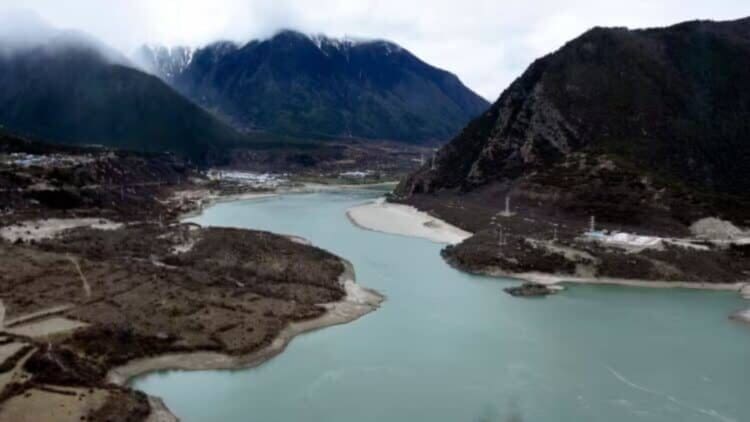Yes, China’s Himalayan desert is set to outscale the Three Gorges Dam project, slowly becoming known as one of the largest hydropower dam projects in the world. With 60,000 MW of power said to be unleashed, this project is becoming as valuable as the iconic Three Gorges Dam project. In the Himalayas, particularly in Tibet’s Medog County, the Motuo Hydropower Station will eventually be able to generate over 300 billion kilowatt-hours (kWh) yearly, which is about three times more than the Three Gorges Dam project.
The Yarlung Tsangpo offers much power potential
Central to the megaproject is the Yarlung Tsangpo River project, which descends over 2,000 meters. Thanks to the Yarlung Tsangpo River, massive kinetic energy potential can be tapped into, all thanks to the five interconnected hydropower stations. From the Motuo Hydropower Station, river water will be drawn from four 20-kilometer tunnels that have been bored through solid mountain rock. The project’s projected capacity is set to reach 60,000 megawatts (MW), proving to be more advantageous than the 22,500 MW capacity of the Three Gorges Dam project.
With operations started in 2033, this $167 billion project is said to be taken care of by the state-owned China Yajiang Group, and thus far, the power transmission lines are already being planned, as it is said to be responsible for delivering electricity to the masses. This is one project that symbolizes a new energy generation era for China, but also signifies the larger expansion of strategic infrastructure in geopolitically sensitive Asian regions.
The Himalayas have a dam that carries not only water
Yes, the Motuo Dam situated close to the India-China border is making quite a statement. The Yarlung Tsangpo becomes the Brahmaputra River downstream, causing the project to gain the attention of both India and Bangladesh, who use the Brahmaputra River to source drinking water and to irrigate crops.
India is uncertain of the implications of China’s plan to control water flow, and tension is escalating due to the disputed Line of Actual Control (LAC) in Arunachal Pradesh. According to India’s officials, the dam could have devastating consequences in the long run.
With transparency from China being limited, India has to believe that China is considering the dam for domestic needs only. China’s larger strategy is to ensure that Tibet remains secure. There are newer roads, tunnels, and transmission corridors that will be linked to the dam, and this will promote migration and urbanization.
Overcoming the variety of technical barriers involved with the project
Due to the size of the dam, technical challenges are to be expected. One being that Medog County is located in a seismically active zone, and sees regular landslides, floods, and tectonic instability. Thus, excavating long tunnels in Earth’s unpredictable geographical location comes with a whole host of technical challenges and barriers.
Like technical challenges, ecological worries also exist pertaining to the Himalayas and the Tibetan Plateau’s fragile ecosystems. Changing the river flow could cause a disruption to the existing ecosystems. Glaciers melting is also a possibility, particularly in this region. Although environmental safety is at the forefront of this Motuo project, transparency remains an issue. With this first-of-its-kind discovery under Tibet, Asia could be splitting in two in real time, as many scientists have revealed.
The dam provides potential for the next century.
With the Motuo Hydropower Station, China is yet again looking for a way to provide power to millions while reshaping the landscape of the Himalayas. The dam is said to be completed by 2033; however, it has yet to be seen how China faces the rising pressures as the world, especially India, watches as China seeks to release 60,000 megawatts of power from the Himalayan mountains to ensure a thriving future for the continent. Could China yet again be hiding this holy grail?





